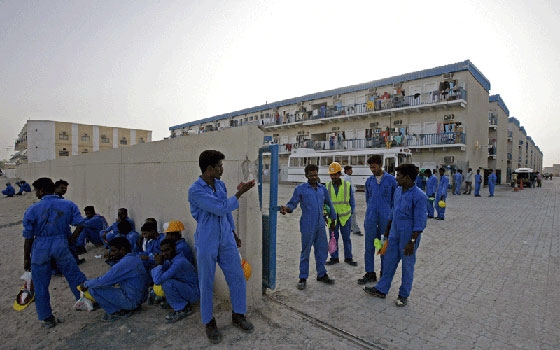After several years of modest growth, the size of Qatar’s labor force has begun to rapidly increase as the country enters a fresh phase of economic expansion, according to a new report released this week.
Qatar National Bank predicts that the number of residents here will grow on average by 7.4 percent annually in the coming years, reaching 2.5 million by 2016.
So far, the all-time high has been 2.17 million people living in Qatar in May, just ahead of the traditional summertime exodus.
QNB’s report builds on the population growth forecast given by government officials nearly a year ago, but offers more insight into how economic trends within the country will shape the makeup of its residents.
During the expansion and development of the country’s oil and gas sector, Qatar’s population increased by 15.5 percent a year between 2004 to 2009. However, growth then moderated as major projects were completed, and economic activity was restrained by the global recession.
New stage
Qatar is now entering a new stage of economic growth as the country prepares for the 2022 World Cup. Construction firms are not only building new football stadiums, but also rail lines, roads, highways and real estate projects, such as Lusail, the Pearl-Qatar and Msheireb.
The work is expected to cause economic growth to accelerate to 7.8 percent by 2016, up from a projected 6.8 percent this year, according to QNB forecasts.
To support the many development projects, more women and white-collar workers will be brought on board.
But the largest share of jobs continue to be semi- and unskilled laborer positions, which are typically held by men who come to the country unaccompanied by family members. Currently, men in Qatar outnumber women by nearly three to one.
Qatar has at times struggled to accommodate these workers, who represent a sizeable part of the population, but have been generally unwelcome in parts of Doha.
For example, construction workers are banned from living in established residential areas.
Meanwhile, so-called “family only days” prevent single men from going to some malls on Fridays – typically their only day off work – although reports of such restrictions have become less common in recent years.
Authorities have attempted to address the issue by building developments that provide entertainment options for those living in and around the Industrial Area. This includes West End Park, which features a movie theater complex, cricket stadium and an amphitheater.
Self-contained communities for laborers, such as Barwa Al Baraha – also known as “Worker’s City – are also being erected.
But previous reports have argued that the country would face challenges housing its growing laborer population in the coming years, as developers are unable to construct an adequate number of purpose-built residential accommodations.
Real estate blues
Laborers and their employers are not the only ones who will be feeling a real estate pinch in the coming years.
During the first half of 2014, the population and economic growth pushed up land prices. According to QNB, rents typically move in the same direction as land prices, with a roughly six-month lag, suggesting that most expats will face higher housing costs in the final few months of this year and beyond.
The report states that annual rent increases will be in the 7 percent range towards the end of the year and reach 8.5 percent by 2016.
Residential rent is the highest monthly expenditure faced by Qatar’s majority expat population, which has been complaining about the rising cost of living for months.
But whether Qatar’s government steps in to manage rising rents has yet to be seen.
Late late month, a member of the Central Municipal Council called for a cap on residential rent hikes.
Qatar previously placed a two-year moratorium on rental rate hikes for most residential leases in 2008. Drawing on past precedent, the CMC’s Mishal Al Dahnim said he’d like rents to increase by no more than 10 percent every two years.
Meanwhile, a government crackdown on illegally partitioned villas announced earlier this year was expected to exacerbate the housing shortage, particularly for low and middle-income residents, and increase the demand for rental accommodations even further.
However, the Qatar Tribune reported that authorities appear to not be rigorously enforcing the new rules, with one local property manager suggesting that a lack of alternative rental apartments may be playing a factor.
Doha News
8 September
























































